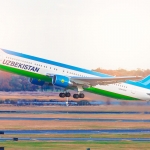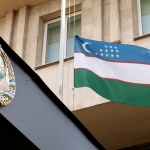03 SEPTEMBER 2019 Y.
In 970 Imam Sayid Abu Bakr and his three brothers Fazl, Ahmed and Hamed, all direct descendents of the Prophet, were laid to rest in the village of Sumitan, seven kilometres west of Bukhara. They instilled the site with an immediate sanctity that soon attracted legions of the rich and famous clamouring to claim holiness by association.
The initial harbingers of the four – Chor Bakr’s in Bukhara holy entourage were the Khojorum sect of Sufic dervishes who based their brotherhood around the holy graves. From 1559-1563 Abdullah Khan commissioned the khanagha, mosque and madrassah that still make up the hearts and bones of Chor Bakr Nekropolis, as well as a series of outlying parks and pavilions that have since been lost.
The Chor Bakr Complex was catapulted through the ranks of Bukhara holiest sightes and during the course of the following few centuries hundreds of family members of both the khan and the local dynasty of Juybar sheikhs were buried in a street of tombs reminiscent in layout, if not decoration, of the Shah-i-Zinda in Samarkand.
The Chor Bakr Nekropolis is approached from a gatehouse and walkway that leads to the central square, dominated by the twin facade of the mosque (left), dervish khanagha (right) and connecting hujra cells of a madrassah and summer mosque. Decoration is sparse, concentrated mainly in the mosque tympanum and dome and khanagha dome, but the symmetry of the ensemble, linked by a belt of twin level loggias, lends it an imposing air. Buildings to the left of the mosque include defunct korikhanas and chillakhanas (places of retreat, especially for the sick) and also a functioning takharatkhana, or wash house, where pilgrims still perform their ablutions in individual cubicles.
Two main streets of crumbling mausoleums in Chor Bakr Complex lead off to the north and northwest and scattered tombs cover the surrounding area like fallen leaves. The tomb of Abu Bakr is said to be the one to the right of the walled passage leading to the west. The site crumbles in a shroud of silence that befits its role as the domain of the dead, but it is still infused with an air of unrestored grandeur that makes it well worth the visit.














